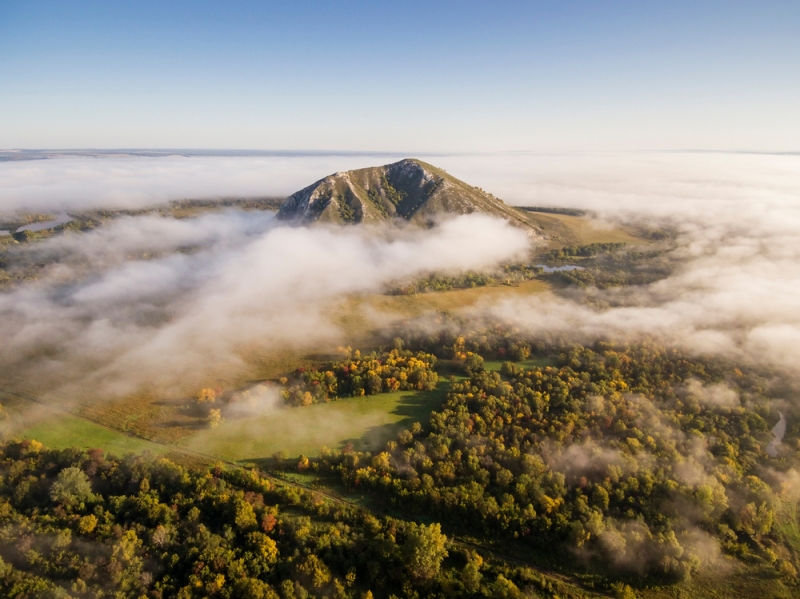
Of course, the wording is extremely bold. It is difficult to compare, for example, Bashkortostan and Australia. And certainly one will not replace the other. But it’s interesting to try!
After all, on the territory of our country there really are many unique places that resemble some famous natural attractions. And maybe their presence will be the decisive point in favor at the moment when you choose a location for your next vacation.
We found five places on the map of Russia where you “you will be transported” to different parts of the world.
Lake Teletskoye, Altai VS Lake Umantay, Peru

These two places are especially often compared. In clear weather, both bodies of water are almost the same emerald blue color and resemble mirrors in which the mountains are reflected. Some even call Lake Teletskoye the twin of the distant and no less mysterious Umantai.
But they are similar not only in appearance: for both Peruvians and Altaians, lakes have a special, mystical meaning and are sacred. For example, it is believed that each lake is a huge lens that not only reflects a person, but also enhances his good or bad qualities. That is why when visiting these places it is recommended to free your head from dark thoughts so as not to multiply their number.
Peruvian shamans still leave offerings to the gods on the banks of Umantay and communicate with Pachamama (mother earth). Lake Teletskoe, amazing in its beauty and location, keeps many secrets and legends. Its southern part has also been revered as a shrine and a place of power since time immemorial. It is here that the sacred mountain, the top of the Altyn-Tuu ridge, the healing spring Yak-Pash and the stone island of Kamain, also called the shaman’s refuge, are located.
How to get there:
By plane to Gorno-Altaisk (4 hours on the way), cost from 10,000 rubles. You can get to the village of Artybash in 4 hours by bus (450 rubles) or in 2.5 by taxi (from 3000 rubles).
Where to stay:
Guest house Hotel Urochishhe Saikol (from 6,300 rubles)
Bashkir Shihans VS Uluru National Park – Kata Tjuta, Australia

Amazing geological objects, formed several million years ago, today exist only in the central part of Australia (in the Uluru-Kata-Tyuta National Park) and in the Sterlitamak region of the Republic of Bashkortostan.
Shikhans are fossilized reef massifs that are high hills. According to scientists, this is actually an analogue of the Great Barrier Reef, which is located in Australia. The Sterlitamak shihans, forming a narrow chain along the Belaya River, are more than 230 million years old. Until recently, there were 4 shihans: Toratau, Yuraktau, Kushtau and Shakhtau. But the fourth, Shakhtau, disappeared due to the mining of limestone on an industrial scale.
The uniqueness of the hills is that they appeared on the surface of the earth as a result of tectonic movements about five million years ago.
There is something for tourists to see here. You can take many beautiful photographs, climb to the top and view the beauty of the Bashkir land from above. The slopes are quite steep, but even a person without special training can climb it. Shihany is called an open-air geological museum – here you can find fossilized marine life. There is also the opportunity to paraglid and ski. So lovers of active recreation will also like this place.
If you have time, visit the Isheevsky caves and the waterfall with the sonorous name Kuk-Karauk.
How to get there:
From Moscow to Orenburg by plane in just over 2 hours and 2,500 rubles. Then by bus to Sterlitamak (journey time from 4 hours 30 minutes), tickets cost about 1,000 rubles. Afterwards – by regular bus to the village of Yangyz Kain, or on foot.
Where to stay:
Hotel Complex Solnechny (from 2,800 rubles)
Sulak Canyon in Dagestan VS Tara River Canyon, Montenegro

This is a very popular object among comparisons. The Sulak Canyon is literally cut through the mountains by the Sulak River, which washed it out over several centuries in the strata of limestone and sandstones. To many, it resembles the Tara River Canyon, which is part of the Montenegrin Durmitor National Park, or the Serbian Uvac River Canyon. And they are really very similar. And not only in the photo: even the air here smells the same!
If you look from the side of a mountain, the idea of where exactly you are is erased. Experienced tourists who have visited all of the above places claim that in some photographs it is even difficult to distinguish them.
The water in the rivers is of amazing color, and the depth is impressive. By the way, it is in Dagestan that the canyon is 620 meters deeper than, for example, in Tara. Here you can not only admire the beauty, but also take a boat ride on the Sulak River or go fishing, visit the places where Tolstoy and Lermontov visited, or find the ancient village of Zubutli in the Tseysky Gorge. The uniqueness of the majestic canyon is that here everyone can find a route suitable for them: both lovers of active recreation and those who like quiet walks. And it’s even more interesting to go there with a guide who will show you many interesting but little-known locations to tourists.
How to get there:
About three hours by plane to Makhachkala for 3,000 rubles, then 80 km to the canyon excursion bus or taxi. You can also rent a car.
Where to stay:
Hotel Zolotaya Imperiya (from 2400 rubles)
Mekletinskoe lake in Kalmykia VS Uyuni salt marsh in Bolivia

This unusual salt lake is often compared to the famous salt marsh of Bolivia. A dried-up reservoir, the Uyuni salt marsh, with the emergence of which a beautiful Indian legend is associated, located in the south of the Altiplano desert plain. There you can see pink flamingos, herds of wild llamas, admire thick layers of natural salt and watch how the sun is reflected in the mirror surface of the lake.
A similar attraction exists in Russia. In the south of the country, in the endless steppes of the Chernozemelsky region of the Republic of Kalmykia, there is its own unique salt marsh.
Of course, you won’t see llamas here, but you can see saigas in their natural habitat. The absence of flamingos is compensated for by the pink pelicans living in these parts, and also by the unusual coral shade of the reservoir. It acquired this color thanks to the microscopic crustacean Artemia salina that lives inside. This is the only living organism that can exist in such salty conditions.
You won’t be able to swim in Lake Mekletinsky, but walking through the dunes is very good for your health. The air has a beneficial effect on the lungs, and they also recommend walking barefoot. Under the layer of salt there is moist, healing, highly mineralized mud – brine. Just walk better carefully, in some places it sucks like a real swamp! So we recommend taking a guide.
The lake also has its own legend. They say that after battles, ancient warriors washed their wounds here – that’s why the shade of the water is so specific.
Mekletinskoye Lake is located in the Black Lands nature reserve, near the village of Adyk. To get here you need to get permission. By the way, the reserve will offer you a lot of interesting entertainment. For example, they will teach you how to throw a lasso, control a camel, use a whip, and will give you the opportunity to visit the mythical country of Bumbu, where eternally happy, ageless people live in conditions of eternal spring.
How to get there:
The most convenient way to get to Elista is by plane, but it’s worth checking the operating hours of southern airports. You can also fly to Volgograd (about 3,000 rubles), and then transfer to public transport, taxi or rent a car.
Where to stay:
Spend the night right in a yurt on the territory of the reserve or stay at one of the Elista hotels. For example, in the White Lotus located in the city center (from 4,200 rubles).
Mount Tyatya, Sakhalin VS Fuji, Japan

Chacha’s beauty and splendor can easily be compared with the famous Mount Fuji. And since Sakhalin is located in relative proximity to the Land of the Rising Sun, they really have something in common. For example, both of them are active volcanoes and symbols (one of the mountains is of Japan, the second is of Kunashir Island, the Kuril ridge and the entire Far East). And despite the fact that Tyatya is much lower (almost 2,000 meters), it looks no less majestic. At the foot of the volcano, coniferous trees also grow, as well as stone birches, dwarf cedar trees and entire thickets of bamboo.
Tyatya (or “father mountain”) is located in a remote place in the north of Sakhalin. But it’s worth visiting it if possible, because it’s one of the most stunningly beautiful places in the whole world! True, not everyone can make a full climb: you need good physical training and special equipment. In addition, there is a risk of meeting bears, getting lost in bamboo thickets, or falling into unexpectedly thick fog. Therefore, it is safest to book an excursion to the Kurilsky Nature Reserve, on whose territory Tyatya is located, or limit yourself to a walk at the foot. Some tourists claim that the landscape below is even more amazing than above.
In the vicinity of the volcano there are hares, weasels, sables and minks, there is amazingly clean air, clear water and a very special atmosphere, which, of course, cannot be compared with anything.
How to get there:
By plane from Moscow to Yuzhno-Sakhalinsk (from 12,000 rubles one way), and then – to Yuzhno-Kurilsk (preferably by boat). Then you can go hiking along the coast or go on an ATV ride with a tour group.
Where to stay:
For example, at the Islander mini-hotel (from 3,300 rubles per room) in Yuzhno-Sakhalinsk.

